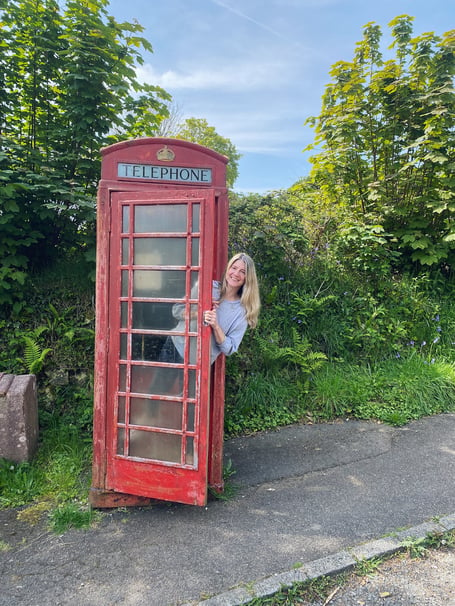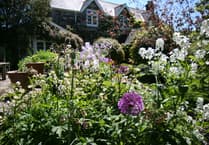When Bryonie Baxter decided to take on a dilapidated red telephone box in Mary Tavy, little did she anticipate the scale of project it would become.
Mary Tavy Parish Council had been asking for expressions of interest to adopt a decommissioned iconic red 1930s’ K6 telephone box when Bryonie had the idea of turning the box on Bal Lane near her home into a community museum chronicling the mining history of the village.
She said: “I thought it would be lovely to use a red telephone box as a local history project - it would have been so sad to lose it.”
Initially Bryonie, who has lived in Mary Tavy for 15 years, intended to do all the work herself and started to sand the box down in preparation for repainting the box when she was encouraged to apply for a grant from the Farming in Protected Landscapes scheme.
The government grant scheme which was aimed at farmers and landowners in the national park has been enhanced to support projects which ‘provide opportunities for people to discover, enjoy and understand the landscape and its cultural heritage’.
They were immediately excited by the project, explains Bryonie and have generously offered her a grant for the restoration of the box and the creation of the museum.
Alongside the photos and old maps that the museum will house, she is now working with Dartmoor guide Paul Rendell to create a free guided walks leaflet for visitors signposting the relics of Mary Tavy’s mining heritage that are still visible today.
"This project aims to showcase Dartmoor's mining history and its profound influence on shaping Mary Tavy over the years.
“I hope that the museum will encourage visitors to explore the village and take a closer look at their surroundings,” says Bryonie as she awaits the start of the refurbishment of the box this month.
She is grateful for all the help she has received so far from the Parish Council and other villagers. She adds, “I’m happy for anyone interested to get involved with the project. I would love for it to become a living archive that evolves with the village.”

-and-Sally-Ann-(visitor-experience-officer)-trying-ou.jpeg?width=209&height=140&crop=209:145,smart&quality=75)


.jpeg?width=209&height=140&crop=209:145,smart&quality=75)
Comments
This article has no comments yet. Be the first to leave a comment.